|
I recently treated myself to a double bill of The Angelic Conversation (1985) and Mirror (1975). I don't think any programmers have paired these two films before, but they resonate with each other, lyrically and visually, as well as offering divergent approaches to art based film making. Both were viewed on a computer screen, with the Jarman film rented online. However this screening of one film after the other was an act of homage to my golden age of cinema going as a teenager in the 1980s. After wee nippering at the ABC Edgware Road, I gravitated to the flea pit circuit that took in the posh Everyman at Hampstead and the grungy Scala at Kings Cross. During this period you could watch double or triple bill features in memorable combinations designed to shock and awe: The Exorcist riding on the back of Enter The Dragon; Terror followed by Savage Weekend (the rediscovered memory of Terror would inspire an arts project called The Melodramatic Elephant in the Haunted Castle); Fassbinder double bills; and, not for the faint-hearted, a starter, main course and dessert of Pasolini films. Also, certain films that should not have been coupled, such as the groundbreaking In The Realm of the Senses (Ai no corrida). I’ve just looked over some calendars from the mid 1980s and was surprised to see how much film I was ingesting. There may have been a limited amount of TV channels in those pre-satellite days, but there was no shortage of films. Auntie Beeb and new kid on the block, Channel 4, had a public monopoly access to the film market. VHS was established and DVD was on the horizon. But to be able to see what your heart and soul desired, necessitated a trip to the picture house. It’s good to see there are plans afoot to design a Scala book, as the cinema produced lovely posters listing their monthly features. I usually hoard memorabilia, so I can’t account for the fact that I don’t have a single calendar month from my membership of the Scala. Perhaps it might surprise you to hear that I really can’t watch films anymore. I rarely go to the cinema. When you are in the business of producing art, there seems to be little time and perhaps inclination for seeking out art in your down time. Maybe it was also studying Film and Literature at the University of Warwick for 3 years and the celluloid feast we had as students, watching each film twice for close textual and semiotic analysis and which also included us projecting the 16mm prints sent up from the BFI. After ingestion, overdose?
While I had an eclectic taste, enjoying the classic narrative joys and happy endings of Hollywood cinema, it was the European art house movies that really tickled my fancy; although they did on occasion stretch your patience; the 317 minute cut of Bertolucci's 1900 seen at the Curzon Bloomsbury springs to mind. In the 1980’s, the work of two artists shaped my aesthetic outlook and personality: Derek Jarman’s gay-punk sensibility that pricked the constricting norms of Thatcherite society; and Andrei Tarkovsky’s metaphysical exploration of memory and haunting use of landscapes.
I had to write an essay to get into Warwick University (in addition to A level grades AAB and a medical examination!) That essay was on Derek Jarman’s The Angelic Conversation which I saw on both the cinema and TV in 1985. The film was a jittery and sensual evocation of Shakespeare’s Sonnets as read by Judi Dench. It was set in a timeless landscape of grainy, every changing palettes of muted colours that condemned men to drift and brood and lock horns in the slow-motion ritual of love and sex. The Sonnets themselves have an enigmatic quality that has divided scholars; the first 126 addressed to a man and the last 28 to the dark woman.
Abbey Fields, Kenilworth 1989
As a young man, dressed in my 1940’s suits, I seemed to wander in and out of both Jarman’s and Tarkovsky’s filmic landscape. I even had a dramatic film, This-That, inspired by my personae and made by fellow student and dear friend, Jacob Barua. That film was recently digitally remastered and there are plans for a sequel that updates the character into the 21st century. I better watch these spaces. After Warwick, I attempted to forge a part-time career as a stills photographer and eventually made it behind the film camera. Apart from several minor juvenilia works, my first real directorial effort was Flood light (2010). This was made for InTRANSIT festival of arts and I made a connection with the V&A Museum, later becoming one of their artists in residence. Although it wasn’t consciously conceived of as such, this film employed the strategies of what we might term the art film. The film used dialectical montage rhythms around the Grand Union Canal and the elevated road in the sky, Westway (A40). It fused together autobiographical elements (school books, carpentry tools), archive photos and film from the 60s and used period locations at the V&A to meditate backwards and forwards in time. There was no narrative drive or dialogue to guide the viewer in interpreting this stream of visual consciousness. A dripping soundtrack connected up images from beginning to end. It was a film about my urban identity in North Kensington. How I was able to intellectually and emotionally connect with water and concrete built environment. It is a film that has been aptly screened under elevated motorway roads in East and West London and in the Whitechapel Gallery. It has all the sins of a first film, but is probably my best work thus far.
Poster for Flood Light, 2010
In addition to making films, i have also curated film programmes and these have been useful platforms to support other emerging filmmakers. These are not exactly double or triple bills, but short films screened one after another and all inter-related on a specific theme. Flood Light was screened as part of a programme in which I invited other film makers to journey with me across the landscape of North Kensington. Local residents were also supplied with film cameras and edited their films at the V&A's Sackler Centre for Education. A panel from the V&A, Westway Development Trust, British Waterways and RBKC Arts selected the Best Film submitted for Flood Light and this was Intersections by Rickster. Henrietta Ross from British Waterways commented on this film: "I was very impressed by this. I thought the format worked really well conveying a great sense of movement. The sense of a journey was represented well, as was the great variety of activity going on around the location and the varied perspectives the location offers on West London life. I thought the different views were matched really effectively with a great eye for detail. The combination of colour, movement, stillness, nature and community activity was really engaging." It was also a pleasure to see an early film from film maker Azeem Mustafa who has since gone on to specialise in martial arts film. Simona Piantieri has also subsequently produced exceptional work. I particularly like the documentary film she made with Michele D'Acosta called A House Beautiful (2017). I followed up Flood Light with another curated programme called West Ten Fade Out (2013). This was able to showcase the film making talents of Dee Harding and Sandra Crisp. When I was the V&A Community Artist in residence based at Silchester Estate, I put together another selection of short films called Home Sweet Home (2014) around the issue of housing and domesticity. I particularly like sourcing archive films and using extracts that provide ironic or amusing contrast in the programme. I used two such extracts in Home Sweet Home and they are animated films from the Wellcome Collection. The Five (1970) is by Halas & Batchelor and opens with a young girl coming home from a party and going to bed; but her pooped toes take on a life of their own. The opening 7 minutes of Full Circle (1974) has exquisite art and animation by Charles Goetz that shows the development of city living and the possibility of over-population in the future leading to the collapse of civilised life. I have also tried to use film to connect residents with the history and social issues in the area in which they live. One example was a free screening I arranged of Leo The Last at the Gate Cinema in 2015. This was and is a profound film that connects with Lancaster West estate and Grenfell tower. I even wanted to screen this on Lancaster West estate for residents and the housing authority but circumstances conspired against that. The residents were locked in dispute with the Tenant Management Organisation over the Grenfell building works. I was commissioned by the TMO to make a short positive film of this regeneration taking into account the residents perspective. The film I delivered was a one hour long film completed in 2016 and called Lancaster West - The Forgotten Estate. It was based on the life stories of seven residents. This was not a straight forward documentary with people speaking to camera. It is voice over set against the architecture of the estate. Although that film was deemed not fit for purpose by the TMO and fell into a state of limbo, I know that it really bonded me with residents in the community who have since become good friends. Hopefully it will have a proper screening in the near future. I have other footage that is strictly reserved for the police investigation. It isn't a good feeling to have art work that is delicately tied to the tragic events of Grenfell. There is no awe, just the shock.
2015 Poster for programme of short films, including rough cut of Lancaster West - The Forgotten Estate
As I think of film, I draw and vice versa. I visualise films in my mind and these invariably start off as storyboard type drawings. The reality its that most films never get off the drawing board. But with the combination of drawing and writing, perhaps I can release some of that pressure cooker tension of being a multi media artist whose main aspiration is to make films. Let me conclude this blog by visualising a meeting of sorts between Derek Jarman and Andrei Tarkovsky on Hampstead Heath. Nothing is impossible in art and film. I need you to imagine that both are simultaneously drawn to the area for the making of a film.
Fade in.
A young man materialises out of the bushes, doing up his trouser belt, exhilarated, out of breath. A trickle of blood flows from his lips. Tarkovsky screams in Russian: cut, cut! The actor has wandered into the wrong film. A grounded helicopter rotor blade whips up a force of air onto the billowing grass and almost topples over the camera. Cut, cut. The production assistant rushes over to the helicopter. The timing is all wrong and aviation fuel is expensive. Tarkovsky curses under his breathe. Then looking at the bemused actor and the apologetic pilot, he starts to giggle and can’t stop giggling. The crew look at each other unsure whether to laugh. Tarkovsky motions for the actor to stand still and for the cinematographer to train the camera on him. Smiles all around and the actor looks up at the sky. It is a bright cloudless summer evening sky. A few rain drops start falling.
Cut to Jarman lining up his shot on the other edge of the heath, near a pond. He has torn up the script (that didn’t seem to be working) and is waiting for something to happen. His actors have got lost and a search party has been sent out. The rest of the crew have gone off for a tea break. A woman in her fifties dressed in a flowered dress walks into shot and sits on a log in the distance. She catches Jarman’s eye. He goes over and speaks to her. Hello, are you waiting for someone? She shakes her head in a combination of yes, no and don’t understand. He tries again. Would you like a cigarette? She nods and takes one. While lifting up the fag to his match, Jarman notices a raw burn mark on her wrist. Jarman wanders back to his camera. He zooms onto her. They hear the sound of a helicopter in the distance. She looks up in expectation. She appears to be acting. Jarman thinks she looks Eastern European, maybe Polish or Russian. He starts filming her as she turns her gaze to the pond and the gentle ripples on its surface formed by the wind.
Fade out.
0 Comments
What would you do? Imagine your neighbour Heinrich Boll had left you a spare key and instruction to water the house plants while he boarded an aeroplane to collect a Nobel prize. Would you steal inspiration from the draft in his typewriter? Or Max Opuls had entrusted you, his dear friend, to retrieve a roll of film from his house; the one the censors didn't see in La Ronde. Would you leer at the said negative being held up to a bright light source? Kathe Kollwitz had to nip out to buy some milk and bread. Mischievous thought of adding a smiley face of ink to the desolate image in the printing press? The aforesaid fantasies were inspired after listening to an interview Holgar Czukay gave in the early 1990s on the Radio 3 programme, Mixing It. He recounted how as a student of Karlheinz Stockhausen in 1968, he sweet talked the secretary and gained access to Herr Aladdin's electronic cave. Holgar was able to record his debut album, Canaxis 5, with the studios impressive tape recorders looping together his interest in Musique Concrete and ethnographic folk recordings. Not all studios live up to their profession. In point of fact, given the relative poverty of artists, they invariably have to beg a shed, borrow a broom cupboard or steal a loft. I have only had one bonafide studio. This was once a 1960s council flat (bedroom, living room and a kitchen) and came with the responsibility to practice community art. An author might build a studio around the typewriter on an heir loomed desk or a poet might dream on a hammock in the garden. Maybe virtual studios will one day be the norm for web based artists. The creation of an avatar, perhaps even adopting the identity of the Germanic artists I have already listed. Expanding on this chain of thought -what about that elusive key to the artist's mind?
Script for This-That by Jacob Barua. Printed on continuous feed paper, Warwick University science block.
I am navigating back to 1989 and the University of Warwick. My fellow Film and Literature student, Jacob Barua, has handed me a film script and declared emphatically: you are the only person in the universe who can play this! I hesitated. Had never acted before. And then there was the troubled central character in the drama who seemed all too recognisable; forever on the edge of everything, nothing, relationships, art, politics. This begged the following question: Jacob are you taking the piss out of me or yourself? For a short period of time we seemed to swap identities. Jacob’s intense cinematic vision became one with my suited and booted persona. Jacob was going to use this short film to catapult him into the prestigious Lodz film school. But it was no plain sailing. No film production on this dramatic scale had been undertaken at the university where theory ruled the day. It meant sniffing out equipment and resources. After two weeks of filming, a mere two days were spend in the edit suite, using equipment for the very first time. I recall a few expletives. We had set the date of screening, one day after the final day of editing. A key animation sequence shot on 8 mm film only arrived on the day of the screening and had to be added post-haste, post end-credits. Thankfully this has now been re-edited into its proper place in the dreaming body of the film. We finally have the keys to the digital edit suite. It's only now after 26 years and working together again on restoring the fading VHS tapes, that we’ve got a new grasp on the importance of this film for us. Let me leave the final words to Jacob Baura who was recently interviewed about his Warwick experience. What on heaven or hell was he thinking about when he made This-That?
Jacob Barua:
"The reason I wanted to become a filmmaker, did not have that much to do with film per se. I had always been enthralled by Art itself in all it's aspects. I had been a poet, a musician, a painter, photographer, amateur actor, but probably loved literature most of all. Somewhat like a brat with his hand in a jar full of goodies, I did not want to let go of any of the Arts and decided that there was was only one vessel that encompassed all of them. The only way, in which I did not have to discard any, but instead fuse them, was through the glowing medium of film. I arrived in Warwick...by mistake. One of my obsessions when it comes to the written word is History. Right until today I often wonder whether I am a self made historian expressing myself and researching through film. Warwick conjured in my mind the mystery and glory of medieval times. I was convinced that the University of Warwick was located somewhere within the town of Warwick. In those pre-internet days, a major source of information were brochures. And the university's were filled with images of Warwick Castle and the old cobble stone streets. That was enough for me to decide, given that it was simultaneously the only university offering such a broad course encompassing foremost literature and then film. I got off the train in the quaint railway station only to be horrifyingly informed that the university was far away in some fields between Coventry, Leamington Spa and Kenilworth! I found the course at the university to be exhilirating in it's scope - exactly tailored to my needs. Great lecturers and given the small size of our department, an opportunity to bond with colleagues. The university also happened to probably have the largest independent Art Centre outside London, at the time. There was everything ranging from a philharmonic orchestra to to a cinema with plush seats and a sterling screen, to one of the best equipped professional theaters anywhere in England. Here I was active as a member of the Warwick Drama Society, taking on delicious roles for the duration of my studies. Besides, the university was a beehive of political activity, of all manner of shades. Of course I was aghast that the most prominent ones were for naive fellow travellers of all manner of totalitarian off shots. However the jewel of this mini-city was a massive library, with a salivating wealth of books that was beyond belief. This-That was the result of a deep inner need to encompass my entire experience as a student who had lived in different countries, cultural and political systems. At the same time I set to creating a time capsule to be sent into the future. All Myths were after all created by somebody, even if that was thousands of years back - so why not make one too, there and then, to be flung into an unfathomable distance? My inspiration for the main character was essential to creating a core, and this was based, at least in terms of the visuals on a readily available 'blueprint'. For I used Warwick's most enigmatic and unique real life student - Constantine Gras. He did not fit into any preconception - as he neither had the persona of a typical student, nor even one from any 'civilian' from our contemporary milieu. Here was Someone who seemed to have been historically misplaced, from a 'wrong' age. Like a potter I used him as my clay, to impose onto him a narrative, which I knew would jar when combined with his persona. So here was a man creating himself i.e. Constantine, whom in turn I was creating further. Layers of creation. One of the overarching themes is the struggle that each human has to undertake to find a space of comfort, to be able to be oneself, while struggling against the dominant societal forces. By comfort I do not at all refer to a personal one, but that of the Other. For the most crucial single question ever spoken for me, which forever thunders across all ages is; "Am I my brother's keeper?" We live in a world circumscribed by political correctness. The moment you challenge the narrative of the day, you are deemed fit for condemnation and rejection. In the case of the film, the character not only isn't ascribing to Modernity and the race to keep up with fashions both external and internal, but occupies a realm that defies the obligatory 'standards'. He is still both a reflection of the Ancient, Romantic and Future ages. Whether we like it or not from the beginnings of History, politics impinge on almost everything in life. That is why the culmination of the film is congealed within the incongruous figure of a young pyjama clad student who dares to take on the Rulers of the World. The selfish manipulators - the Daeduluses vs the selfless dreamers - the Icuruses. If I were to try to draw a circle; Sleep - Pyjama - Dream - the Impossible - Courage - Death - Eternity - Sleep.
The reception of the film, I will admit, was heart breaking. An outright regurgitating by the audience. Particularly so - when not even our lecturers or collegues could grasp or extract any meaning out of it. But this should have been expected, as it was intentionally put together in such a way as to defy conventional modes of film-making. And again, it was indeed a film made for Another age. But which one? Time will still tell.
I have no regrets about the film as it was then, and in it's curent slightly re-edited form. It turned out prescient. You are Alone among people. To be fulfilled you have to metaphorically fly, even if demise is the price to be paid. There is no escaping Newton's and other more serious Laws. But just like there was no relevant message in the film for the audience at the time, there similarly isn't any for those today. There are plenty of other better sources, dear audience member, if you are in need of a message. This is not a cerebral feast but mainly a sensory experience. Once I got there, one of the most satisfying experiences at the Lodz Film School was when all students were herded into a cinema, and made to watch the film by Piotr Wojciechowski; he was a Filmmaker, Scriptwriter, Catholic Philosopher but most of all a living legend as a novel writer ("Skull within a skull", "Is it worth to have a Soul" and others). He immediately took to the film. In his laudatory lecture after the film, he said he felt it had the feel of T.S. Elliot's " The Waste Land". He was the first ever viewer to fully comprehend the ambitions of this film. At the Lodz Film School I carried on with the 'tradition' of making This-Thatian films. With no pretence at all. Poland's greatest ever fimmaker, and it's Chancellor Wojciech Has, would always chide other lecturers for being baffled by my films - telling them that they were wrong to search for conventional meanings in my short films. For him they were "Intricate riddles" I don't really have any wise tips for aspiring filmmakers. Rather warnings, in that it is going to be a lonely, cruel, and ungrateful journey, except for the very, very lucky few. Well, take heart - at least there's going to be one worthwhile viewer of your creation - Yourself. Having been trained on 35mm makes a filmmaker by far more disciplined and honed to the workings of a film. The Digital Age has its own advantages. But the downsides are greater. More self indulgence and turning an important medium of Art into a toy. I have been a gardener for a long time now. There's at least one massive film within me waiting to happen. Then I intend to go back to my gardening. It's this and that, after all." If you want to experience This-That, the film is screening on: 10th September 2016 around 7.30pm Muse Gallery, 269 Portobello Road, W11, London Portobello Film Festival Full venue and programme details. This-That Trailer from Constantine Gras on Vimeo. It is with great sadness that I have just received news of the recent passing away of Victor F Perkins. He co-founded the film department at Warwick in 1978 and made a decisive contribution to the acceptance of film as an art form worthy of deep study. I have fond memories of him hunched over the Steenbeck undertaking a close textual analysis of In A Lonely Place with 2-3 students; a more kinetic Victor was found over at the Student Union playing his favourite pinball machine; delivering those impassioned lectures where he poured his intelligence into the vessel of a film; seeing so much nuance in terms of decor and edit, so much so, that I seem to recall, at the end of one lecture, Jacob asked: is it really possible that the film maker meant all this? Victor bough a copy of This-That in 1989 for the university archive. It was always a pleasure to meet up with him over the decades since I graduated. Alas he missed the screening of the remastered film at the university in March 2016, but I was touched when he specially came in to see me and we had a good chin wag about life: how he was adjusting after a recent stroke, his desire to learn the German language, his concern about the corporate development of education and his cluttered honorary office in the department which he really should tidy up. I told him that we had dedicated the film to our old lecturers who had inspired the young to fly. Victor had a rueful smile. For the past 6 months I've been working with Jacob Barua on the re-mastering of a student film called This-That. We have grappled with the digital transfer of 1989 VHS tapes and this process has rekindled our trans-continental friendship between London and Nairobi. It has also had us shedding old skins as we revisit academia as Film and Literature students at the University of Warwick. The film is distinctly autobiographical weaving in the poetic and political, cross dressing and referencing all manner of allusions and illusions. It's a quintessential student flick filled with angst and metaphysical cravings. Let me tell you about our musical odyssey. Although I'm not a trained musician, music is essential to my art and film projects. Check out my homage to vinyl records. For the past five years I've created short sequences of music for my films, often using a pseudonym called Ewa Sikorski. When it came to extended film scores I worked with other composers and musicians: Laurence Eliot-Toms constructed a percussive jazz-tinged-score for Flood Light; Roberto Bove's electronic guitar vibrates through Vision of Paradise. This-That is the first time I've attempted to both score and sound mix a film. I have no fear of improvisation and overdubbing was my principle as a piano keyboard was hooked up to an array of Garageband instruments. Needless to say, this work in progress has not been plain sailing. One area that needed a complete overhaul was the musical score. The original was a selection of 1980s mood pieces in the style of Vangelis and late Miles Davis. However the guiding spirit of the film was a short extract from Monteverdi's Vespers of 1610 called Duo Seraphim. For copyright reasons the original music has been excised and replaced by a less punchy, but definitely more unified score. The new recording of Duo Seraphim was movingly performed by two tenors from the Queens Park Singers, Cathie Hammond and Théo Hénusse. For the film, I have endeavoured to create an over arching theme and to provide variations throughout the thirty minute running time. While the central character in the film has very little to say, he is constantly hearing discordant sounds and the visionary singing of Monteverdi's angels. There are also specific visuals that required a subtle use of musical counterpoint and the dramatic sound of silence. This-That is about an isolated and alienated student and the score had to capture this off-beat tempo. Piano and harp in various combinations were used to evoke the ethereal atmosphere in which a student has fallen down to an ivory-towered world and desires a transcendental escape. In between lectures and library sequences, there are oriental themes that tie in with the then contemporary student movement in China, chants that are associated with the central female character and what I consider the best writing in the film, the dream sequence, where a delicate array of electronic voices is set against some poignant phrases from the Duo Seraphim: "Two seraphim cried to one another." Why and how Monteverdi? In my third year at Warwick, I studied a musical module that was run by Rowland Cotterill that showcased his wonderful keyboard playing. The first piece of music on the course was Monteverdi's Vespers of the Virgin Mary and I was immediately bowled over by the expressive diversity of 13 separate pieces (15 if you count the plainsong in between) that are unified by a compositional virtuosity of style. As Jacob and I were in pre-planning for the film, I dragged him over to the music centre and we listened, spellbound, to the Duo Seraphim extract on a scratched vinyl record; incidentally, Warwick university has no specialist music department and it was through the efforts of Rowland that music was kept on the teaching agenda. Good on him, lucky me and blessed This-That! In the past year, Jacob and I have been considering other composers and musicians, but in many respects, I was best suited to provide the inner musical phrasing for the central character. In real life, I was that young introspective man. Yes. Him was I. In my youth, I always wore a three piece suit, trilby and either Oxfords or heavy duty boots. Jacob had drawn on my real-life persona to construct this semi-fictional narrative. Like many young people and creative artists I was going through a phase of rebellion against main stream culture and establishing my own identity in dress that included the thunderous sound of boots with cast iron heel and toe points. Part of that Neo-Romantic play of costume in the 1980s was certainly influenced by the fashion and musical legacy of the late, great David Bowie; definitely more Thin White Duke than Ziggy. I have attached the first few bars from the Duo Seraphim and also the opening tune minus the sound effects. You need to imagine this delicate structure of voices, piano and harp announcing the arrival of an enigmatic student who has arrived at Warwick University and where the military stomp of his boots collides with birdsong and fellow students. The musical and narrative journey will complete a full circle. After a labyrinthine student union-ball scene that is punctuated with footage of the abortive chinese student movement, Him will return to nature and the opening theme will be reprised. The last shot of the film has an ascending piano scale with both the sound of marching boots and the tap, tap, tap of a manual typewriter. All of these prepare the way for a final complete rendering of the Duo Seraphim which takes the viewer to another plane of reality; one where 'this' could quite possibly be 'that'. This-That will be screened at the University of Warwick on 3 March 2016 before doing the rounds of film festivals. The trailer can be viewed online. The confrontation of Them, Her and Him over a suitcase that contains unexpected objects - sacred and profane.
A though-provoking exhibition about the future of Kenyan forests is currently showing at the National Museum in Nairobi. It has been conceived and curated by the renowned film maker Jacob Barua. Let us listen to him as he guides us on a journey through this exhibition which is also an installation and happening. "Nearly half of this exhibition comprises photography of forests by the late Stan Butrym. He was recognised as one of the first Polish pioneers in the field of championing forests as an source of aesthetic inspiration. He has supremely captured the almost fairytale, eerie and surreal ambience of these Polish forests." "Poland's forests are majestic and mysterious. The last remaining primeval forest in Europe has survived only in Poland and was named a UNESCO World Heritage Site and an incredible 29% of its territory is covered by forests. The oldest documented tree in Poland is 1250 years old. The fauna is equally astounding as it is the only country in Europe with freely roaming bison, lynx, bears, boars, wolves and other animals. Over 500 years ago Polish Kings were among the first in the World to create environmental enclaves, having officially placed many forests under Royal protection." "However the main message of this show is not so much the factual beauty of Polish forests, but an attempt to provoke Kenyans into loving their own forests. As you walk around the display you will encounter numerous suitcases each with tree seedlings. These are Kenyan indigenous species that are on the verge of extinction. I made the selection by closely consulting with top Kenyan botanists to get this right. Kenya is becoming one big Australian forest. We have decided to opt for species from down under. and no longer plants local ones. There's a widespread belief that Australian trees grow faster and give better yields. The scientists I have interacted with say this is a baseless myth. But then how do you tackle a myth once it grows roots?" "There are also books on benches as this is meant to be a "Departures Lounge" on an eco journey. I thought in particular Wangari Maathai and Lech Walesa were relevant to the event. Wangari had her head slashed with a machete during her long fight to save Kenyan and world forests. While on the other hand we have an electrician who helped topple a system that didn't care at all for the environment. Here I am showing that whatever station you have in life, you can make a difference to humanity as a single determined individual. " "Even audio performances are used as impromptu happenings to enhance the entire event. I literally grab visitors with whatever skills or talents they have and invite them to do something that becomes intrinsically a part of the whole. The kids from the Jirani Children's Choir were truly great. They come from a slum called Dandora in Nairobi which has the largest garbage dump in the city and children forage through it. Such kids as those in the choir have been literally plucked out of this humongous festering un-environmental mountain of poverty, through the sheer angelic nature of their voices. Out of the largest garbage mountain in Kenya comes inspiration, beauty and promise." "The show has also turned out to be a hit with ordinary Kenyans. The Museum is one of the few places working class Kenyans can afford to take their entire family on an outing. Youngsters have given me inspiration. Many have told me or written in the visitor's book that they will now start planting indigenous trees and also tell their teachers that they should do so." "Our tree species are on a grand Safari; out into the realm of History." Photography and text kindly reproduced by Jacob Barua. The exhibition runs from the 21st November 2015 to the 21st December 2015 at the National Museum of Kenya. For the past few months, I've been re-mastering This-That in close collaboration with the film's author, Jacob Barua, who lives in Kenya. To recap, This-That was made in 1989 when we were both third year Film and Literature students at the University of Warwick. It is a fictional drama about an alienated student who finds transcendence in a stone figurine. It was my first involvement in a film project and a great all round experience on the acting, editing and production front. The film was screened twice at the university in 89 but was shown more as a rough cut. We had not devoted enough time (days rather than months) for the edit process and a key animation sequence, shot by a security guard on 8mm film, could only be included after the end credits for the second screening. The film was seen by about 100 people on a 10,000 plus student campus. As there was very little feedback, we always assumed it left those select few stunned in a cinematic stupor. It received more rigorous scrutiny when projected at Lodz film school where Jacob subsequently enrolled. One Prof likened it to a visual tone poem in the style of T.S. Eliot's Waste Land. It has taken us a full 26 years and the occasion of the 50th anniversary celebrations at the University of Warwick to do justice to a film that gave "students and classics a bad name" according to one apocryphal review. The master VHS tapes were stored in the perfect micro-climate of Nairobi. Natural deterioration of the magnetic tape has resulted in some contrast loss and discolouration, especially noticeable in shots of the sky. Jacob attempted the first digital transfer at a Kenyan edit suite but the DVD files he sent me were poor. The tapes were then couriered over and I had a Kodak lab transfer them into AVI digital files or such was the theory. Despite several efforts, this lab could not perform a professional service and the files either had an interference signal or no sound, and even more lamentably, were unable to open up in Mac as Kodak were using Windows based systems. Refund time. Third time lucky and another lab was able to get a clean digital transfer from the VHS. They also cropped in slightly to remove the flickering decay at the edges of the 720x576 video resolution format. While we may have attained a state of grace with the imagery, the sound track is still a work in progress. There are plans to completely re-score the film and this will hopefully be accomplished next year, perhaps as a commission for a young music student or budding composer at the University of Warwick. I believe the film holds up incredibly well and this is testimony to the mystical cinematic talent of Jacob. The biggest challenge however were the labyrinthine sequences shot at the student union and fancy dress ball. This rightly gets the scissors treatment and is now more tightly interwoven with the preceding and concluding scenes of dream and spiritual release. Both Jacob and I wondered whether Him (the name of my character) should speak in the new version; we could have added an interior monologue. Sensibly we have stuck to the original conception and have maintained a quality of enigmatic silence. I only utter one "rosebud" word in the film. This-That is very personal and akin to watching myself through a looking glass. There is some loss of light transmission (not digitally induced) but it is strangely reassuring to see a twenty-six year younger version of your self. I am dressed throughout in 1940s suits and trilby; that was my fashion throughout the 1980s and 90s. I was and still am haunted by Greek mythology (it is in my cultural DNA after all) and this is offset by events on the political stage. Those events of 1989 involved the collapse of communist walls and the abortive student-lead Democracy Movement in China. How did the young of that world react to their elders? In the film, we have an off-key portrait of a student, a budding writer who is literally lost for words. For him there is no solidarity with peers or the possibility of creative action, whether individual or collective. The figurine he reaches out to grasp contains some unknown or primal connection to a past-present-future. If there is a message at the close of the film (no spoiler alerts here), perhaps it is that our everyday actions and infrequent visions do not need to be held in temporal check by a freeze frame or fade out. We can edit and we should direct our own lives. I sincerely hope there are not too many alienated students amongst the current generation at Warwick that numbers in excess of 25,000. How many of them will be experiencing This-That? This-That will be screened in Spring 2016 at its spiritual home. Event details. Digital restoration has been supported by a grant from the Centre for International Theatre Development. This-Trailer trailer.
|
Categories
All
Archives
May 2024
|








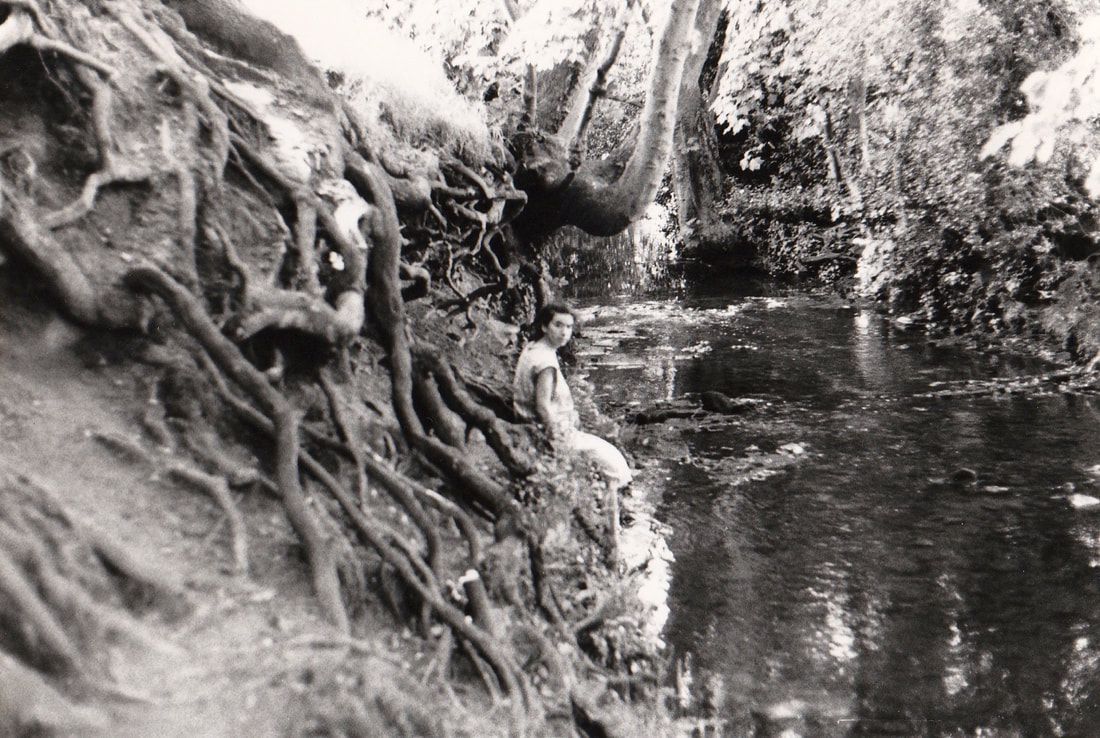



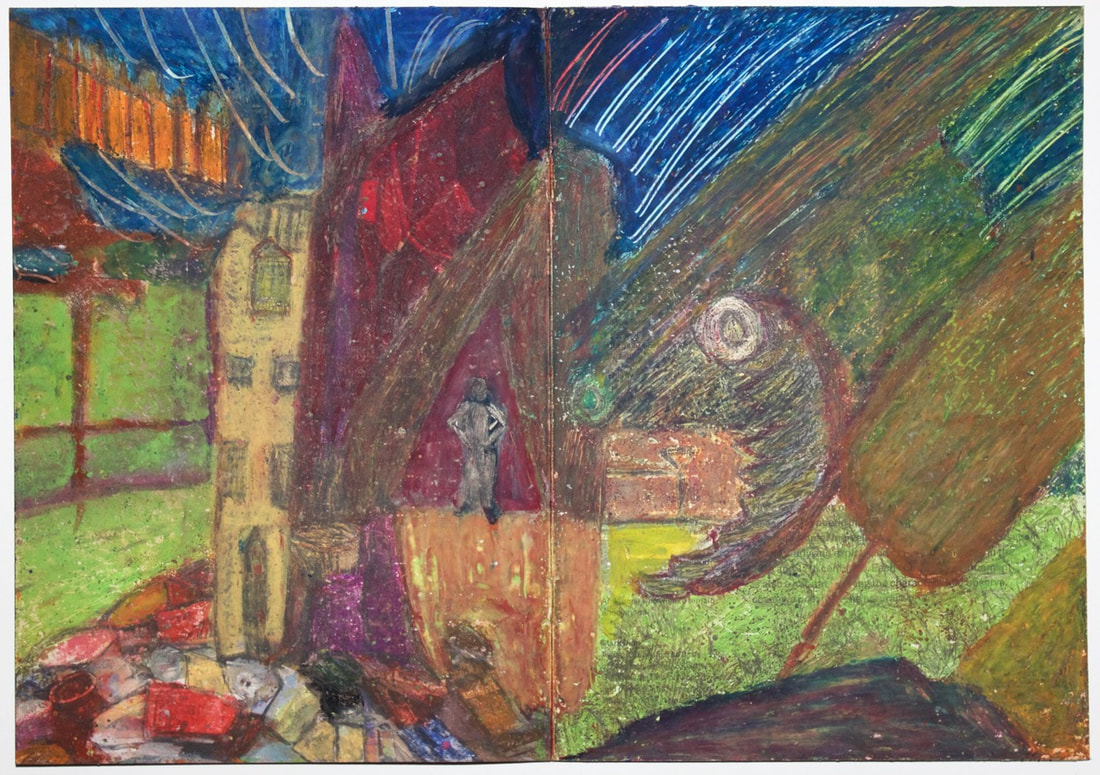



















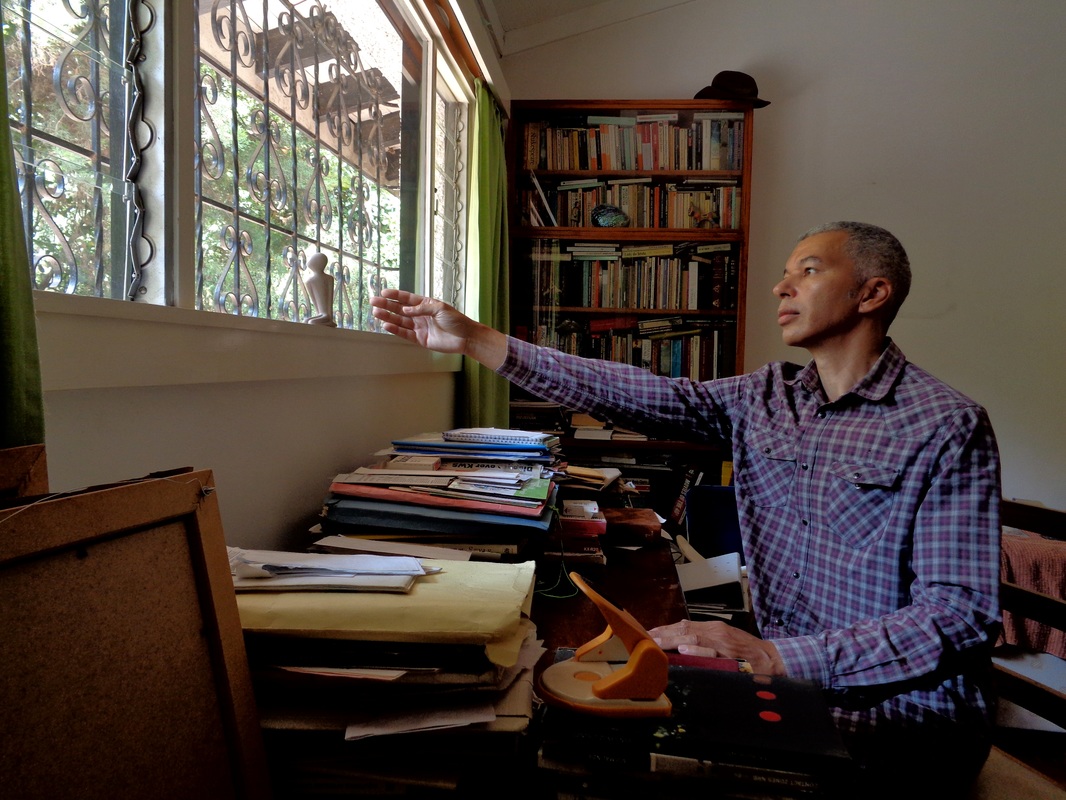





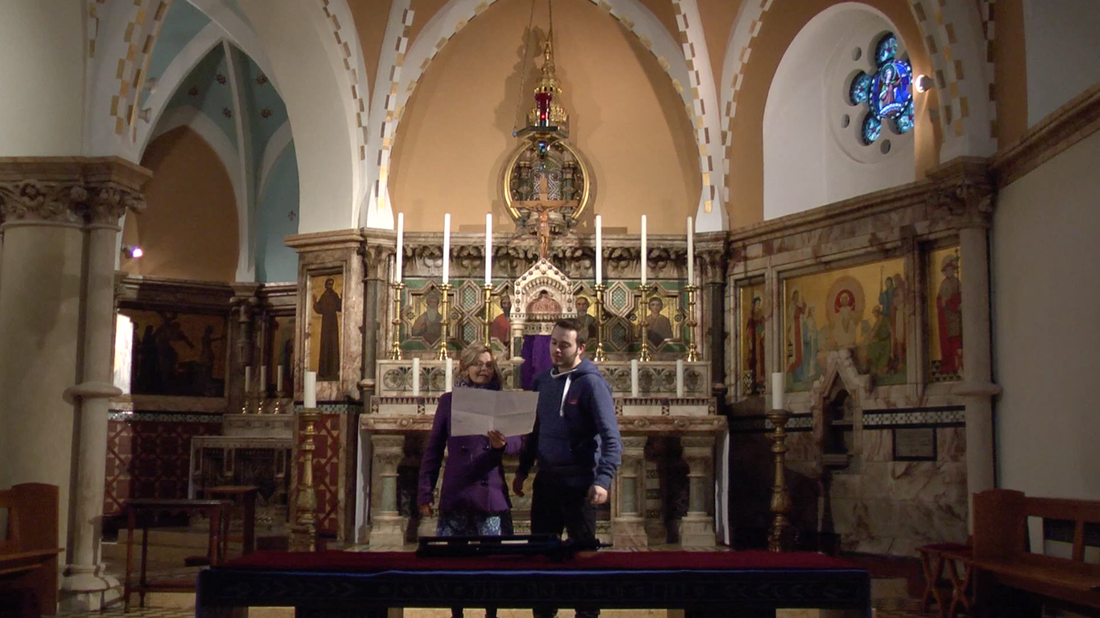
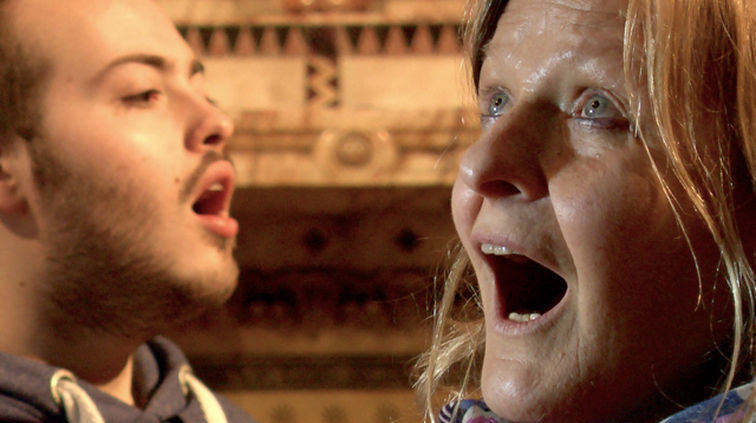



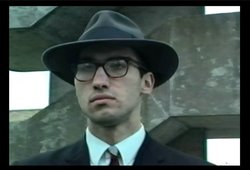



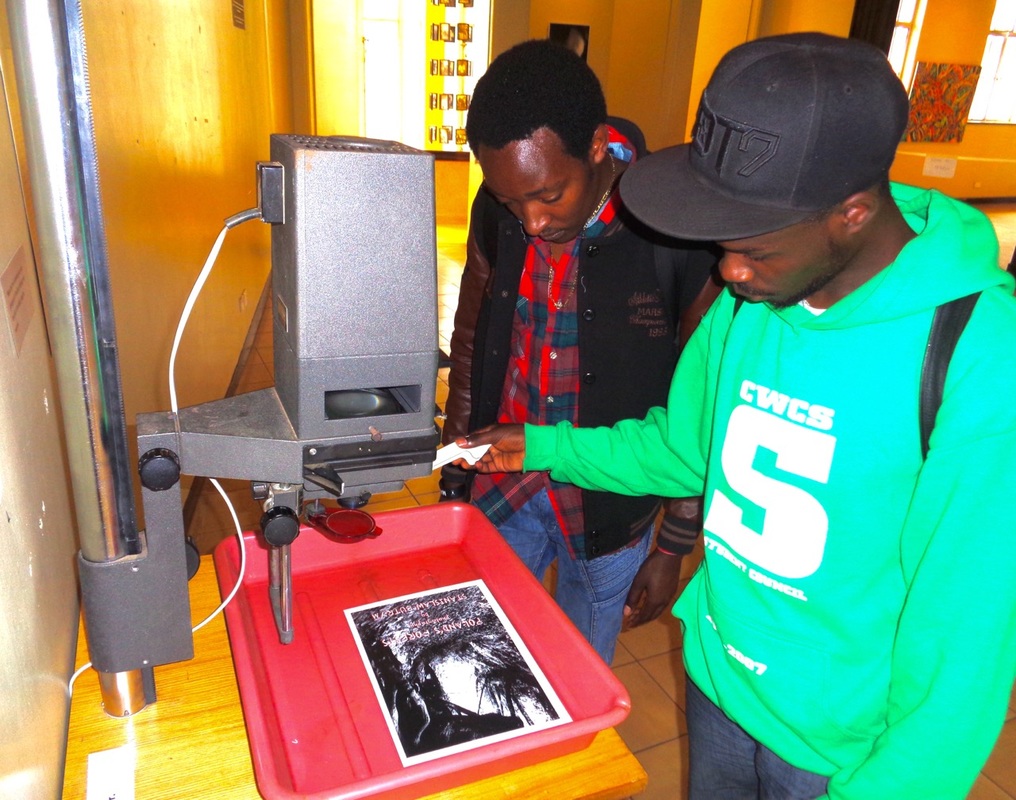





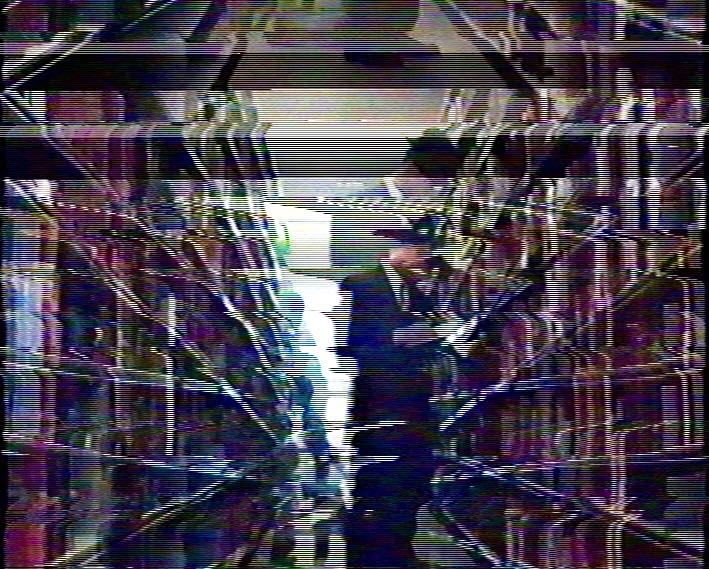








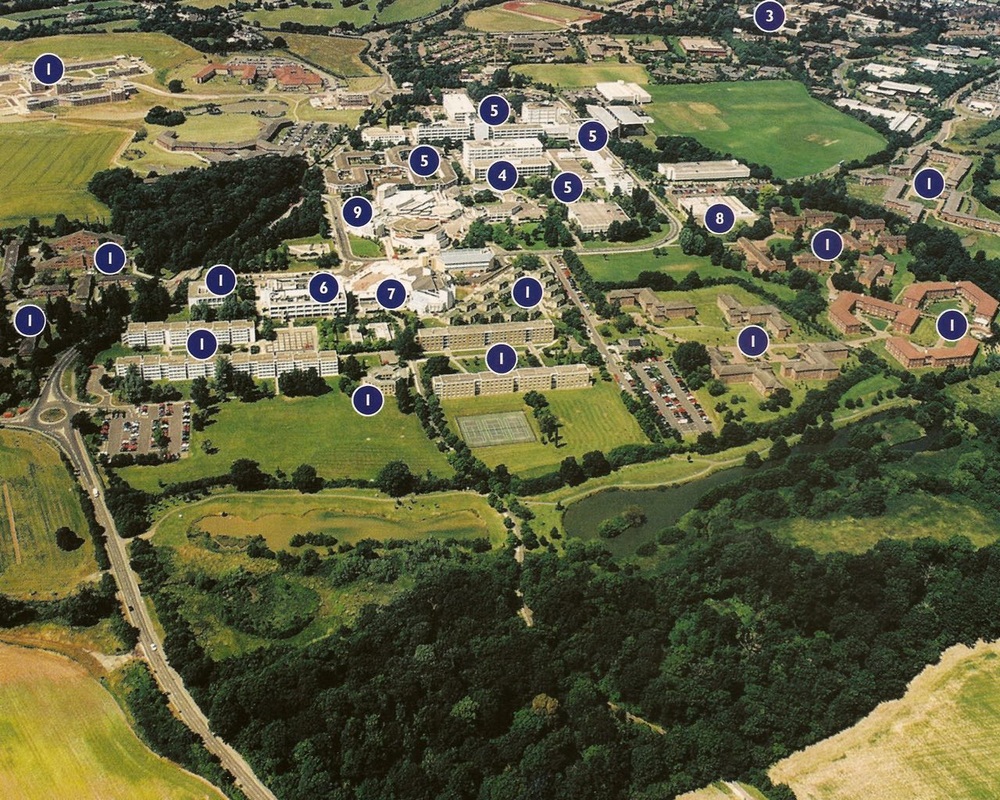
 RSS Feed
RSS Feed
